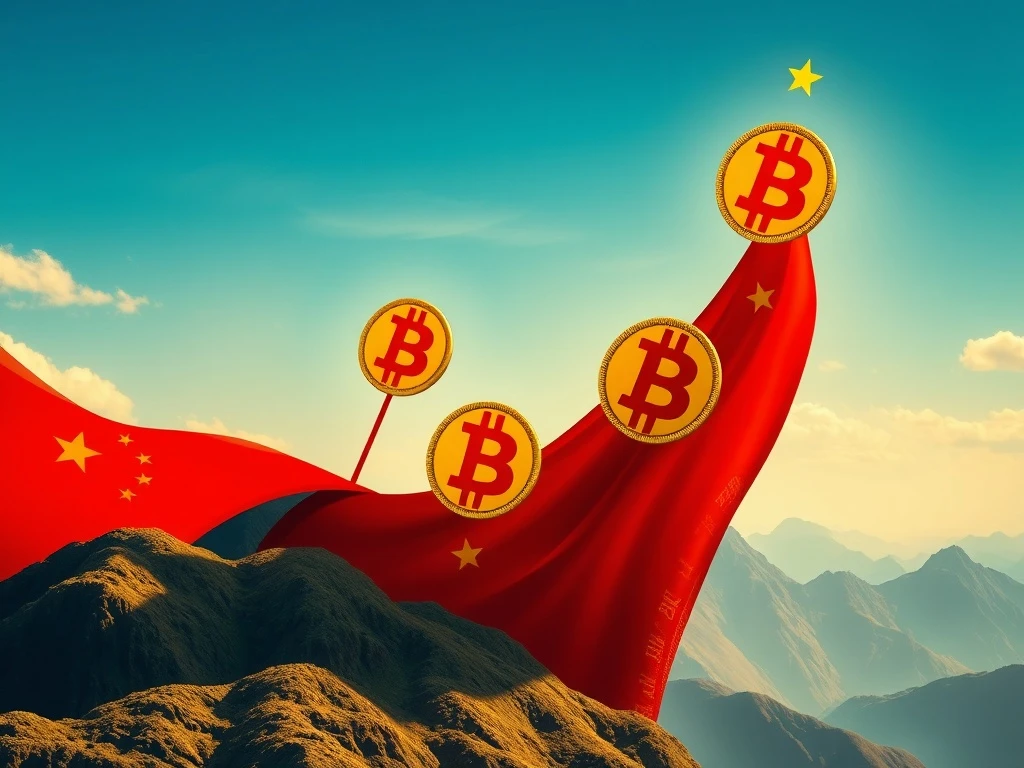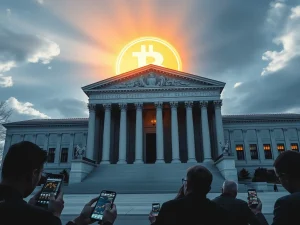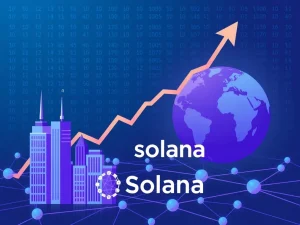Bitcoin Price Explodes to $119,000 on Crucial US-China Tariff Truce

In a stunning turn of events, the Bitcoin price recently made headlines, leaping by 2% to briefly touch an impressive $119,000. This significant surge wasn’t just a random fluctuation; it was a direct reaction to breaking news: a 90-day extension to the US-China tariff truce. For anyone invested in the volatile world of cryptocurrencies, this development offers a fascinating glimpse into how global geopolitics can directly influence digital asset valuations. Let’s dive into what this truce means for Bitcoin and the broader crypto landscape.
Bitcoin Price Soars: What Drove the Surge?
The cryptocurrency market is a dynamic beast, often reacting swiftly to macroeconomic and geopolitical shifts. Bitcoin’s recent climb to $119,000 is a prime example of this sensitivity. The immediate catalyst was the reported 90-day extension of the US-China tariff truce, emerging from high-level negotiations in Stockholm. This news instantly sparked a shift in investor sentiment, pushing capital from traditionally ‘safe-haven’ assets towards more speculative investments like cryptocurrencies and equities.
Here’s a quick breakdown of the key factors at play:
- Temporary Relief: The truce delays contentious tariffs until August 12, providing much-needed breathing room for markets bracing for trade-related volatility.
- Global Market Impact: The news saw the global crypto market cap approach an astonishing $4 trillion, indicating widespread positive reaction among traders.
- Bitcoin as a Barometer: Bitcoin has increasingly become a bellwether for global economic uncertainty. Historical patterns show that tariff negotiations often trigger short-term price increases in risk assets like BTC.
The US-China Tariff Truce: A Market Game Changer?
The negotiations that led to this crucial US-China tariff truce involved key figures such as U.S. Treasury Secretary Scott Bessent and Chinese Vice Premier He Lifeng. He Lifeng’s statement about strengthening economic ties underscored the ongoing efforts by both nations to manage their complex trade relationship. This 90-day extension isn’t just about delaying tariffs; it reflects a strategic focus on economic stability over immediate concessions, a pattern both countries have adopted in the past to navigate disputes.
While the truce offers temporary stability, it’s crucial to remember that the August 12 deadline looms large. Negotiators still face the challenging task of resolving lingering disputes over:
- Tariffs themselves
- Technology transfer and intellectual property
- Supply chain resilience and diversification
The outcome of these ongoing talks will undoubtedly shape investor confidence in the coming months, influencing everything from traditional markets to the long-term trends in crypto valuations.
Shifting Investor Sentiment: Are Risk Assets Back in Play?
The immediate aftermath of the tariff truce clearly demonstrated a significant shift in investor sentiment. When geopolitical uncertainties subside, even temporarily, capital tends to flow away from safe-haven assets like gold and into higher-yielding, albeit riskier, investments such as cryptocurrencies and equities. Bitcoin’s 2% gain was perfectly aligned with this broader market optimism. However, seasoned analysts are quick to caution that Bitcoin’s inherent volatility means rapid reversals are always possible if tensions unexpectedly resurface.
For institutional investors, this period of cautious optimism is critical. Their resource allocation strategies, influenced by these geopolitical developments, will play a significant role in shaping long-term trends for the entire digital asset space. The interconnectedness of global trade policies and crypto valuations has never been more apparent.
Broader Crypto Market Impact: Approaching $4 Trillion?
Beyond Bitcoin, the entire crypto market experienced a wave of positive momentum, with the total market capitalization reportedly nearing $4 trillion. This broad-based rally suggests that the positive sentiment generated by the tariff truce wasn’t confined to just Bitcoin but permeated across various altcoins and the wider digital asset ecosystem. Traders reacted swiftly, seeing the truce as a green light for increased risk appetite.
This period highlights a critical aspect of the crypto market: its growing maturity and responsiveness to global macro events. What happens in Stockholm or Washington can now have immediate, tangible effects on digital asset prices worldwide. While the short-term outlook appears cautiously optimistic, vigilance remains key as the August 12 deadline approaches and further negotiations unfold.
In conclusion, the recent jump in Bitcoin price driven by the US-China tariff truce is a powerful reminder of how global events intertwine with the crypto world. It signals a temporary reprieve from trade tensions, fostering renewed investor sentiment for risk assets across the entire crypto market. While the temporary stability is welcome, all eyes will remain on the upcoming negotiations and their potential to either solidify this optimism or reintroduce volatility.
Frequently Asked Questions (FAQs)
Q1: What caused Bitcoin’s recent price surge?
Bitcoin’s recent 2% price surge to $119,000 was primarily triggered by reports of a 90-day extension to the US-China tariff truce, which alleviated immediate trade-related anxieties and shifted investor sentiment towards risk assets.
Q2: How does the US-China tariff truce affect the crypto market?
The US-China tariff truce reduces geopolitical uncertainty, prompting capital to flow from safe-haven assets (like gold) into riskier investments, including cryptocurrencies and equities. This typically leads to short-term price increases across the broader crypto market, as seen with the global market cap approaching $4 trillion.
Q3: Is Bitcoin considered a safe-haven asset or a risk asset in this context?
In this specific context, Bitcoin acted as a risk asset. When geopolitical tensions ease, investors tend to move away from traditional safe havens and allocate capital to assets with higher growth potential, like cryptocurrencies.
Q4: What is the significance of the August 12 deadline mentioned in the article?
The August 12 deadline is crucial because it marks the end of the 90-day tariff truce. By this date, negotiators must resolve lingering disputes over tariffs, technology, and supply chains. The outcome of these talks will significantly influence market sentiment and potentially Bitcoin’s future price action.
Q5: What role did key figures like Scott Bessent and He Lifeng play?
U.S. Treasury Secretary Scott Bessent and Chinese Vice Premier He Lifeng played central roles in the negotiations in Stockholm that led to the 90-day tariff truce. Their involvement highlights the high-level nature of the talks aimed at managing the complex trade relationship between the two nations.










